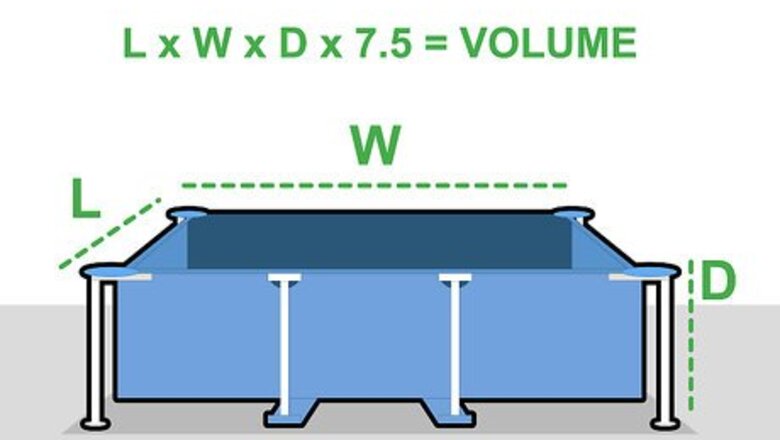
views
Calculating Run Time per Day
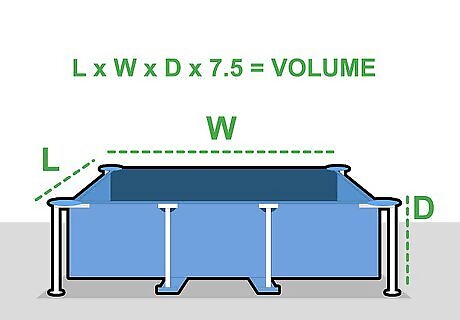
Determine the volume of your pool. How long you run the filter depends on the pool size to filter ratio. Calculate the volume of your pool by multiplying the length by the width by the average depth in feet. Multiply this number by a standard multiplier, which is 7.5 for rectangular and square pools and 5.9 for other shapes. Example: 16*32*5*7.48 = 19,149. This would give the volume of the pool in gallons for this 16x32 inch pool that has an average depth of 5 feet. If your pool has different areas of depth to it, calculate the volume of each area of depth before adding them all together to find the total volume of your pool.
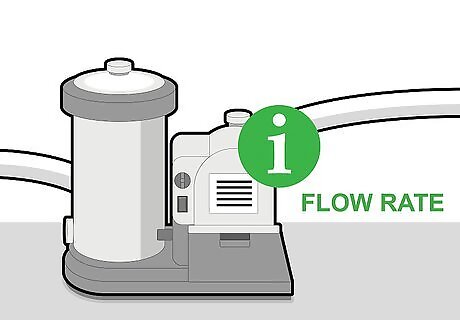
Find out the flow rate of the pump. Include the resistance to flow in your plumbing system. You can estimate your pool plumbing resistance to be 20ft/lbs for small pools, and 40ft/lbs for large pools or installations where the pool pump is far removed from the pool area. The pump manufacturer can tell you the flow rate for certain resistances. An average 1 HP pump will move about 50 gallons per minute. This would be 3,000 gallons per hour.
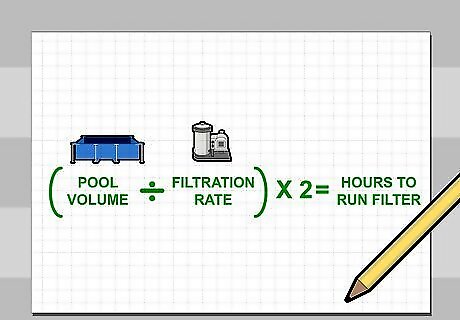
Calculate the turnover rate for your pool. The minimum recommended turnover for a pool is 2 complete turnovers in any 24 hour period. Use this equation to see how long you should run your filter: (Pool Volume ÷ Filtration rate) x 2 = Hours to run filter. This will tell you how many hours to run your pump to filter the water a full 2 times. For example, using a pool volume of 19,149 gallons and a filtration rate of 3,000 gallons per hour: (Pool Volume ÷ Filtration rate) x 2 = Hours to run filter (19,149 ÷ 3000) x 2 = 12.766, or about 12 hours and 45 minutes for a full 2 cycles.
Following Basic Rules for Filtering
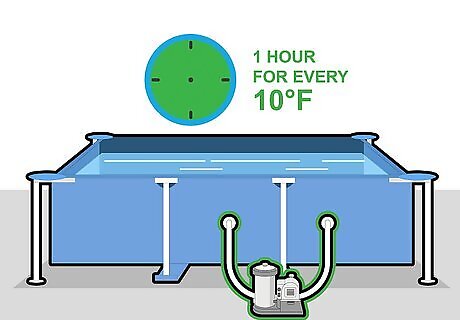
Run your filter 1 hour for every 10 °F (−12 °C) it is outside. A general rule of thumb you can follow year-round is running your filter dependent on the temperature. In the winter, you’ll be running it 6 or fewer hours, while in the summer, you might have to go a full 12. If you’re experiencing temperatures of 80 °F (27 °C) or greater, you should be running your filter about 10-12 hours regardless.
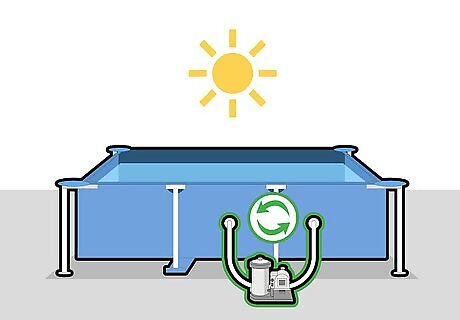
Run your filter during the daytime when your pool water is hottest. These warm temperatures are when algae is most likely to start growing in your pool water. Run the filter with chlorine the entire length of the day in these cases to avoid any chances of algae turning up in your pool. Although running your filter at night may save you energy, it does nothing to prevent the algae from forming during the day when it’s actually got a chance to, unlike at night.
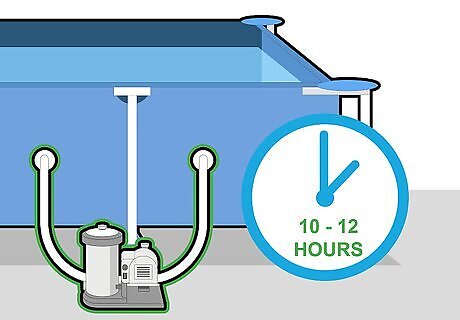
Feel free to safely run your filter 10-12 hours a day. Your pool filter is intended to be run for up to 12 hours a day consistently. You can run it on its lower settings normally, and then on the higher settings when you’re adding the chlorine or other cleansers to the water. This way, you’ll be ensuring you’re filtering out the entire contents of your pool at least 2 times a day. If you have a small filter, you will need to run the filter longer depending on how many gallons the filter can process in a given time. Don’t worry about running it for too long, it’s better to overrun your filter than not run for long enough.
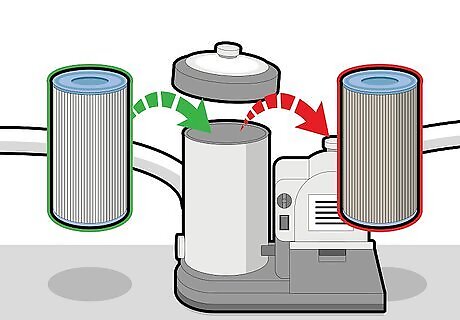
Clean out or replace pool filters after long periods of use. Over the course of a pool’s life, you’ll need to have the filters cleaned out if they’re dirty or clogged with debris. Otherwise, you may find you’re having to run your filters for longer to achieve the same effect. Here are instructions detailing how to Clean a Cartridge Type Swimming Pool Filter.

















Comments
0 comment